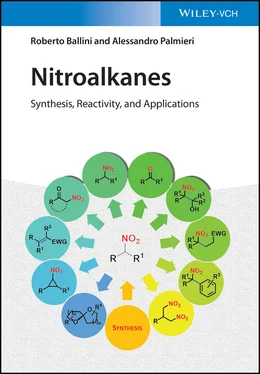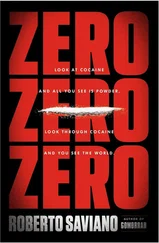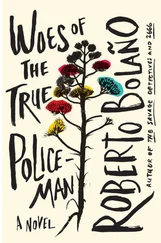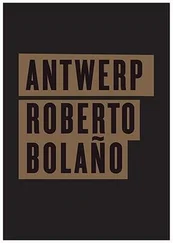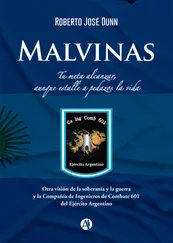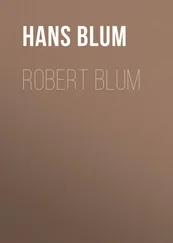Roberto Ballini - Nitroalkanes
Здесь есть возможность читать онлайн «Roberto Ballini - Nitroalkanes» — ознакомительный отрывок электронной книги совершенно бесплатно, а после прочтения отрывка купить полную версию. В некоторых случаях можно слушать аудио, скачать через торрент в формате fb2 и присутствует краткое содержание. Жанр: unrecognised, на английском языке. Описание произведения, (предисловие) а так же отзывы посетителей доступны на портале библиотеки ЛибКат.
- Название:Nitroalkanes
- Автор:
- Жанр:
- Год:неизвестен
- ISBN:нет данных
- Рейтинг книги:3 / 5. Голосов: 1
-
Избранное:Добавить в избранное
- Отзывы:
-
Ваша оценка:
- 60
- 1
- 2
- 3
- 4
- 5
Nitroalkanes: краткое содержание, описание и аннотация
Предлагаем к чтению аннотацию, описание, краткое содержание или предисловие (зависит от того, что написал сам автор книги «Nitroalkanes»). Если вы не нашли необходимую информацию о книге — напишите в комментариях, мы постараемся отыскать её.
Nitroalkanes — читать онлайн ознакомительный отрывок
Ниже представлен текст книги, разбитый по страницам. Система сохранения места последней прочитанной страницы, позволяет с удобством читать онлайн бесплатно книгу «Nitroalkanes», без необходимости каждый раз заново искать на чём Вы остановились. Поставьте закладку, и сможете в любой момент перейти на страницу, на которой закончили чтение.
Интервал:
Закладка:
Table of Contents
1 Cover
2 Title Page Nitroalkanes Synthesis, Reactivity, and Applications Roberto Ballini Alessandro Palmieri
3 Copyright Authors Prof. Roberto Ballini University of Camerino Chemistry Division Via S. Agostino 1 62032 Camerino Italy Prof. Alessandro Palmieri University of Camerino Chemistry Division Via S. Agostino 1 62032 Camerino Italy Cover Cover Image: Courtesy of Ballini All books published by WILEY-VCH are carefully produced. Nevertheless, authors, editors, and publisher do not warrant the information contained in these books, including this book, to be free of errors. Readers are advised to keep in mind that statements, data, illustrations, procedural details or other items may inadvertently be inaccurate. Library of Congress Card No.: applied for British Library Cataloguing-in-Publication Data A catalogue record for this book is available from the British Library. Bibliographic information published by the Deutsche Nationalbibliothek The Deutsche Nationalbibliothek lists this publication in the Deutsche Nationalbibliografie; detailed bibliographic data are available on the Internet at < http://dnb.d-nb.de >. © 2021 WILEY-VCH GmbH, Boschstr. 12, 69469 Weinheim, Germany All rights reserved (including those of translation into other languages). No part of this book may be reproduced in any form – by photoprinting, microfilm, or any other means – nor transmitted or translated into a machine language without written permission from the publishers. Registered names, trademarks, etc. used in this book, even when not specifically marked as such, are not to be considered unprotected by law. Print ISBN: 978-3-527-34745-2 ePDF ISBN: 978-3-527-82676-6 ePub ISBN: 978-3-527-82677-3 oBook ISBN: 978-3-527-82678-0
4 Dedication This book is primarily dedicated to Prof. Goffredo Rosini who was my mentor and who firstly introduced me to the chemistry of nitroalkanes, constantly encouraging and passionate me. Then, I want to dedicate this book to my daughters Federica and Francesca who have been a constant stimulus for me. Roberto Ballini
5 About the Authors About the Authors Roberto Ballini is a Full Professor of Organic Chemistry at the University of Camerino (Italy) and Past President of the Italian Organic Chemistry Division. The scientific activity of Prof. Ballini is mainly dedicated to Organic Synthesis, with particular interest on the chemistry of nitroalkanes that, thanks to their highly chemical versatility, can be easily employed for new generation of C—C single and C=C double bond, for the cleavage of C—C bond, for their conversion into other important functionalities, thus as key building blocks in the synthesis, often under sustainable conditions, of a large variety of important “fine chemicals” such as natural products featuring enhanced biologically activity, pharmaceuticals, etc. The scientific activities have been evidenced by: 1 More than 250 publications, including more than 20 reviews, mainly dedicated to the chemistry of nitroalkanes. 2 The role of Editor of the Green Chemistry Books: (i) Eco-Friendly Processes and Procedures for the Synthesis of Fine Chemicals (2009) and (ii) Green Synthetic Processes and Procedures (2019); both of Green Chemistry Series of Royal Chemical Society, Cambridge. 3 The preparation, as main author, of four Book chapters on the field of “Nitroalkanes.” Alessandro Palmieri obtained his Laurea degree cum laude in Chemistry in 2002 at the University of Camerino (Italy) where, five years later, he received the PhD degree in Chemical Sciences. Then, in the period 2007–2010 he held a postdoctoral fellowship and in 2008 he moved, as visiting postdoctoral fellow, to the ITC laboratory at the University of Cambridge (Prof. Steven V. Ley). After the experience as assistant professor (2010–2013), in 2014 he was appointed associate professor in Organic Chemistry at the University of Camerino. Currently, his research interests involve (i) the chemistry of aliphatic nitro compounds, (ii) the realization of new one-pot protocols for generating and derivatizing heterocyclic systems, (iii) the preparation and use of solid supported reagents, (iv) the development of new sustainable processes, and (v) flow chemical protocols.
6 Acknowledgments Acknowledgments We wish to express our gratitude to all persons who contributed directly or indirectly to the preparation of this book by their researches and publications. We would like to offer a special thanks to Prof. Dieter Seebach and Prof. Noboru Ono for their historical contributions in this field. Finally, we wish to thank our Camerino’s colleagues for their high helps in many aspects of the chemistry of nitroalkanes. Roberto Ballini and Alessandro Palmieri
7 Introduction Introduction Why the choice of a book dedicated to “nitroalkanes”? Usually a generic molecule containing the nitro group is called “nitro compound”; however there are three different typologies of nitro compounds, with distinct chemical behaviors ( Figure 1 ): (i) aromatic nitro compounds, subjected to electrophilic substitution, (ii) conjugated nitroalkenes that, due to the presence of an electrophilic carbon in β-position, are exposed to nucleophilic addition, and (iii) nitroalkanes that, under basic conditions, act as nucleophiles due to the presence of an acidic proton germinal to the nitro group, providing the formation of C—C bond with electrophiles. Figure 1 Three different typologies of nitro compounds. Thus, since the studies dedicated to the chemistry of nitroalkanes and their application in organic synthesis are growing year after year in the last two decades, this category of molecules has proven to be one of the most valuable and versatile collection of substances in organic synthesis. Consequently, this book is dedicated exclusively to this class of molecules. However, as the chemistry of nitroalkanes is constantly expanded, this book should not be considered as “the book” of nitroalkanes but just “the first” (after the pioneering Ono’s book [1]) of a series dedicated to this class of molecules.
Reference Reference 1 1 Ono, N. (2001). The Nitro Group in Organic Synthesis. Wiley-VCH. ISBN 0-471-31611-3.
8 List of Abbreviations
9 1 Synthesis of Nitroalkanes 1 Synthesis of Nitroalkanes 1.1 Synthesis of Nitroalkanes Simple nitroalkanes (CH 3 (CH 2 ) 0–5 NO 2, c -C 5,6 H 9–11 NO 2 , i -PrNO 2 , etc.) are commercially available, while the more complex ones need to be prepared following a variety of synthetic procedure and, in this sense, there are a variety of methods to obtain a large collection of nitroalkanes.
1.1 Synthesis of Nitroalkanes 1.2 Nitration of Mesylates and Tosylates 1.2 Nitration of Mesylates and Tosylates The displacement of alkyl halides with metal nitrite, thanks to the large number of available halides, is the most used procedure for the preparation of nitroalkanes. However, despite the advantages introduced with these methodologies, the search for alternative sources is surely welcomed. In this regard, alcohols are a broad class of molecules easily available from both commercial and nature sources. The conversion of alcohol into nitroalkanes firstly requires the conversion into the corresponding mesylates or tosylates (usually in quantitative yields) that can be easily converted ( Scheme 1.8 ) into the corresponding nitroalkanes using tetrabutylammonium nitrite (TBAN) in toluene for few hours (2.5 hours for primary compounds and 28–40 hours for the secondary ones) [10]. Scheme 1.8 Nitration of mesylates and tosylates. The method was realized at room temperature and, after a simple work up, a variety of primary and secondary nitroalkanes can be easily obtained is 41–61% overall yields.
Интервал:
Закладка:
Похожие книги на «Nitroalkanes»
Представляем Вашему вниманию похожие книги на «Nitroalkanes» списком для выбора. Мы отобрали схожую по названию и смыслу литературу в надежде предоставить читателям больше вариантов отыскать новые, интересные, ещё непрочитанные произведения.
Обсуждение, отзывы о книге «Nitroalkanes» и просто собственные мнения читателей. Оставьте ваши комментарии, напишите, что Вы думаете о произведении, его смысле или главных героях. Укажите что конкретно понравилось, а что нет, и почему Вы так считаете.
